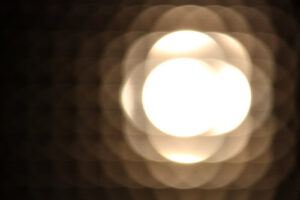
Being afraid of the dark just got scientifically validated.
Light therapy has been known to be an effective mood enhancer for people with Seasonal Affective Disorder, but University of Virginia researchers found that light can also be used as a way to help those suffering from anxiety disorders.
University of Virginia psychologist Brian Wiltgen and biologists Ignacio Provencio and Daniel Warthen studied the reactions mice had to light, aiming to find out how light impacts physiology, behavior and learned fear. They discovered that increasing light for these nocturnal animals increases fear, much the same way that decreased light can intensify fear in humans, who are diurnal and more comfortable in the daylight.
According to a press release from the University of Virginia, the the method the researchers used to study learned fear in their specimens involved long tones and electric shocks:
“They cued their mice with a minute-long tone that was followed two seconds later by a quick, mild electrical shock. The mice learned to associate the tone with the shock and quickly became conditioned to duck down and remain motionless when they heard the tone, in the same way they would if a predator appeared.
The researchers discovered that by intensifying the ambient light, the mice showed a greater fear reaction to the tone than when the light was dimmer. This makes sense Wiltgen said, because mice naturally avoid detection by predators by hunkering down motionless as a defense mechanism. In a natural habitat they likewise would become particularly anxious in the presence of a predator in bright light where they would be more easily detected.
‘We showed that light itself does not necessarily enhance fear, but more light enhances learned fear,’ Wiltgen said. “It may be similar to a person learning to be more fearful in the dark.'”
From this study, researchers said, it can be implied that because humans are diurnal, “the absence of light can be a source of fear. But increased light can be used to reduce fear and anxiety and to treat depression. If we can come to understand the cellular mechanisms that affect this, then eventually abnormal anxiety and fear might be treated with improved pharmaceuticals to mimic or augment light therapy.”
The study was published in the Aug. 1 issue of Proceedings of the National Academy of Sciences.

